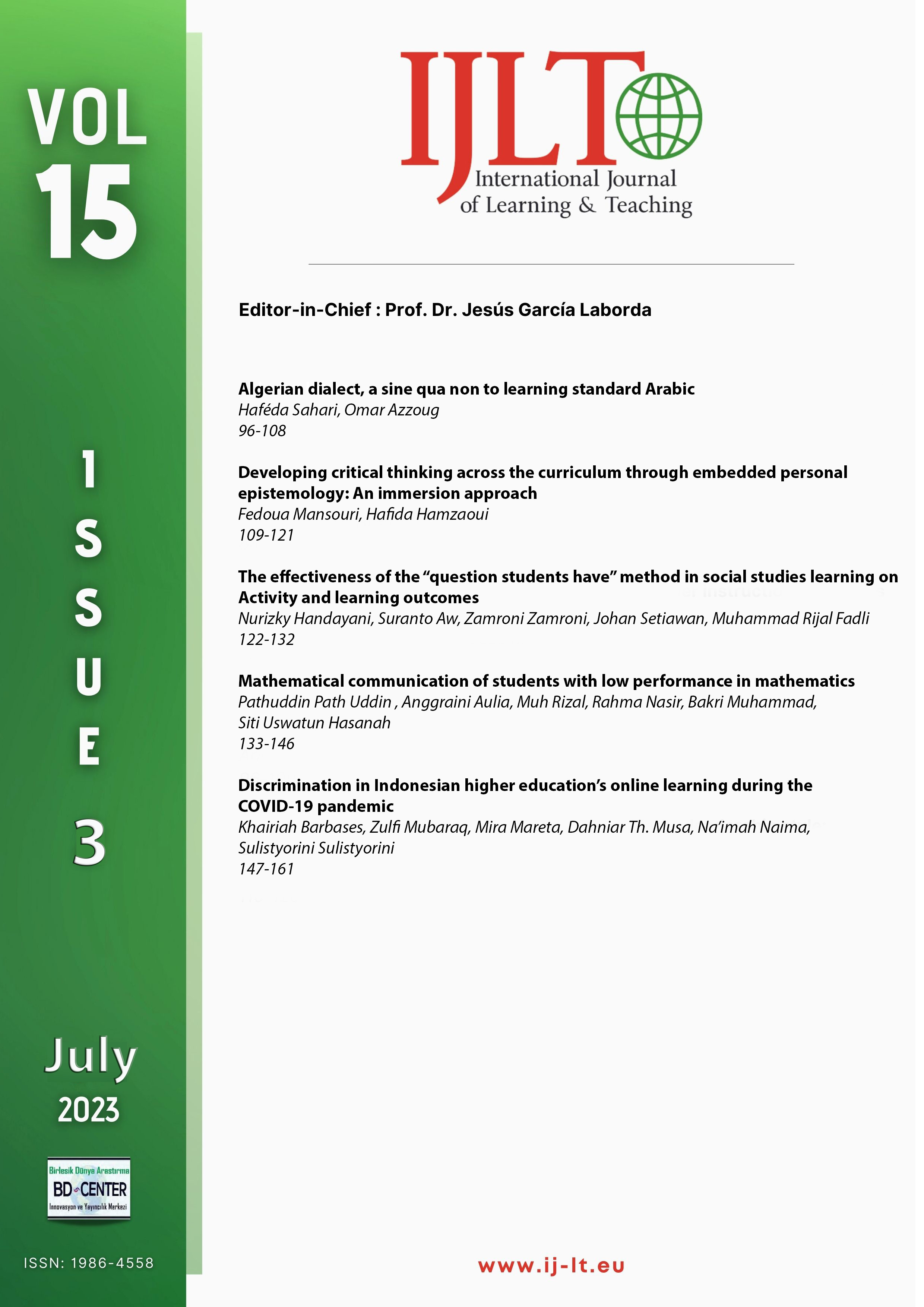Mathematical communication of students with low performance in mathematics
Main Article Content
Abstract
This study aims to help students with poor mathematical skills communicate through mathematics. Two twelfth-grade senior high school students consisting of a male student (S1) and a female student (S2), with low mathematical performance, were selected as respondents. The subjects were determined by using the data pairing technique developed by Milles. Data were collected through test and semi-structured interviews and then analyzed qualitatively. The result of this study revealed that there are mathematical communication differences between male and female students. Both subjects presented mathematical ideas by writing down important points from the test. They utilized mathematical notation correctly and represented ideas in graphics adequately. The male student communicated their understanding better by connecting various concepts. At some point, they could not describe thoughts using written words properly. This study is expected to provide benefits for teachers in designing learning that can improve the learning outcomes of low-ability students.
Keywords: Gender; mathematics ability; mathematical communication; student.
Downloads
Article Details

This work is licensed under a Creative Commons Attribution-NonCommercial-NoDerivatives 4.0 International License.
Authors who publish with this journal agree to the following terms:
- Authors retain copyright and grant the journal right of first publication with the work simultaneously licensed under a Creative Commons Attribution License that allows others to share the work with an acknowledgement of the work's authorship and initial publication in this journal.
- Authors are able to enter into separate, additional contractual arrangements for the non-exclusive distribution of the journal's published version of the work (e.g., post it to an institutional repository or publish it in a book), with an acknowledgement of its initial publication in this journal.
- Authors are permitted and encouraged to post their work online (e.g., in institutional repositories or on their website) prior to and during the submission process, as it can lead to productive exchanges, as well as earlier and greater citation of published work (SeeThe Effect of Open Access).
